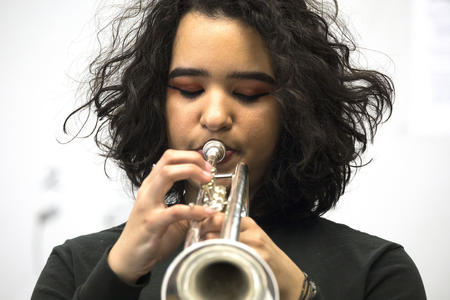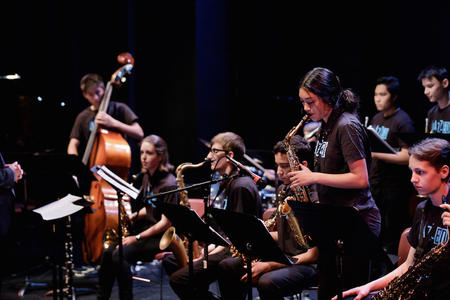For the past 26 years, Tula’s Restaurant and Jazz Club has been the hub of local jazz in Seattle, but the club is closing its doors at the end of September. We’re about to lose more than just a nightclub. Tula’s has been the heart of our local jazz scene and, to many of us, it feels like a death in the family.
Elliott “Mack” Waldron, the proprietor of Tula’s, always has been committed to presenting local jazz artists, although on occasion jazz luminaries like Roy Hargrove, Wynton Marsalis, and Donny McCaslin took the stage. Jazz Alley brings renowned touring artists to Seattle, but rarely books local musicians. The Triple Door and The Royal Room book an eclectic range of music, but Tula’s booked all jazz year-round.
Trumpeter extraordinaire Thomas Marriott has been leading bands at Tula’s since he was 20 years old. “Tula’s was one of the last venues where being local was an asset rather than a liability,” he says. “If you worked at Tula’s as a sideman, they would probably give you an opportunity to have a night of your own. Some people were ready, some weren’t. That’s our traditional form of learning and getting better, sometimes known as ‘paying dues,’ which has become harder and harder to do these days due to lack of opportunity. Venues where the ‘up-and-comers’ and the ‘elders’ share equal space facilitate this. Tula’s was that place for us.”
I first played at Tula’s when I was in high school (Meadowdale High in Lynnwood). Pianist Dan Kramlich and I drove down to Belltown from the suburbs to play at the Sunday night jam sessions. From the sidewalk, you could see and hear the band through a window under the iconic blue neon Tula’s sign. The dimly lit club was filled with a small but attentive audience, its walls adorned with photos of local jazz artists. Hushed conversations, clinking glasses, a blaring cash register and the rush of Second Avenue accompanied the live music. As a teen, it was exhilarating and nerve-racking to play alongside local jazz icons like Marc Seales, Jay Thomas, Greta Matassa, Thomas and David Marriott and Mark Taylor. These inspiring sessions also taught me some tough lessons on the bandstand, experiences you can’t replicate in a book, online or in school.
In 2004, Mack offered me my first gig as a bandleader, which became the catalyst for me to put together a band and eventually record my first album. Mack, and more recently club manager Jason Moore, continued to invite me and my colleagues to present new projects, for which I’m eternally grateful.
In the time I’ve lived in Seattle, we have lost The New Orleans Creole Cafe, Highway 99 Blues Club, Patti Summers and now Tula’s. Today, our beloved venues The Royal Room and Egan’s Ballard Jam House, are under enormous financial pressure to make ends meet each month. In fact, the building that houses Egan’s was up for sale, but was just pulled off the market last weekend.
It’s not fair to count on benevolent proprietors like Mack and Jason to shoulder the financial risk and emotional burden of running the venues that serve all of us. Relying on cover charges and selling food and alcohol aren't enough to keep these venues open anymore.
But it is possible to keep our culture alive amidst the pressure to maximize short-term profits. Four years ago, when Seattle’s jazz radio station faced extinction, our community united to raise $7 million in under five months to independently license the station. Now KNKX serves local musicians and audiences more than ever before.
We are facing a similar crisis with jazz venues, and we need another massive community response. Whatever the new model looks like, sustaining our venues will happen only if musicians and fans rally around a shared vision, tell a story that resonates and start a movement. We may even find allies among our new neighbors in the tech industry. We would all need to commit time, energy, art and money to keep jazz alive in Seattle, continuing the legacy born on Jackson Street a century ago.
We may want to consider a member-driven nonprofit model like the Seattle Symphony, Jazz at Lincoln Center or the Seattle Repertory Jazz Orchestra. Through a combination of member donations, grants and ticket sales, these organizations sustain venues and pay professional musicians a living wage (which is not usually the case when we play for a cover charge).
Seattle may have thriving jazz institutions like the Earshot Jazz Festival, Origin Records and renowned music education programs. But without venues to incubate local musicians, there won’t be much of a scene at all.






